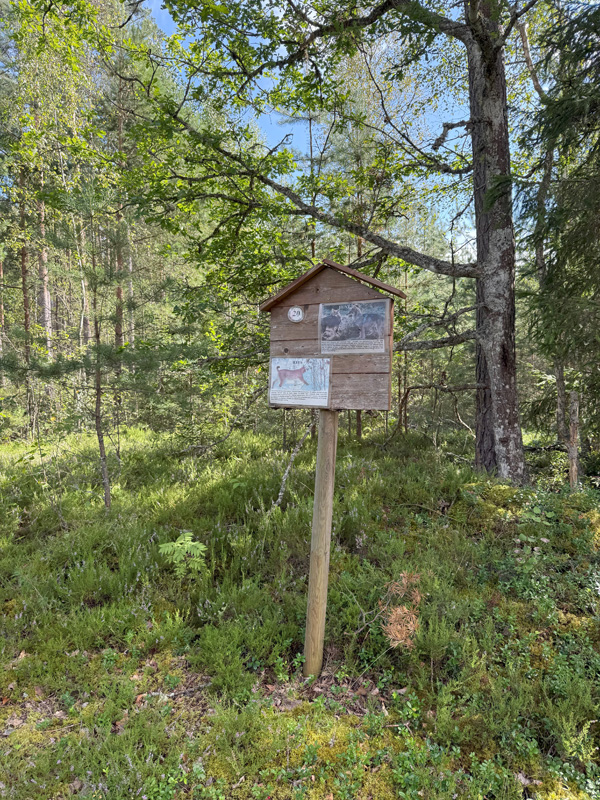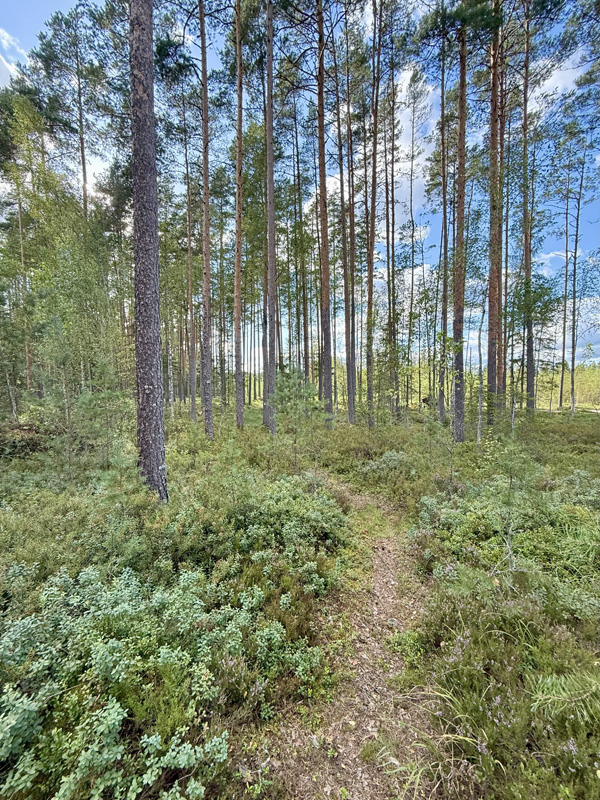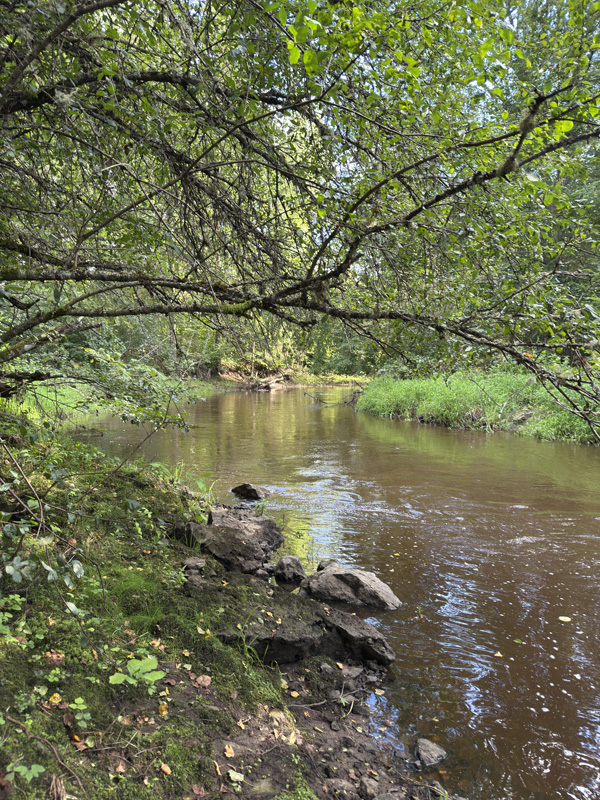It was an odd, almost intrusive feeling—as if I had just driven straight into someone’s backyard. The grass was neatly trimmed, unnervingly domestic, and behind the weathered barn I couldn’t tell whether a cottage or a farmhouse might be hiding. My planning, once again, had been a bit rushed—haphazard, really.
Months earlier, while absentmindedly browsing maps, I had thought the southernmost point of Estonia would be easiest to reach through Latvia. But that morning, after standing on Estonia’s highest peak, I began to wonder what my next move should be. The southern tip looked temptingly close—only fifty kilometers, just about an hour’s drive. I’d done stranger detours before. Why not? Out of curiosity, I even asked ChatGPT for the “easiest” way to get there. The reply: it lay in the forest on the Estonian–Latvian border, accessible by a marked hiking trail. I was skeptical, but with the distance so short, what did I have to lose?
And now here I was, wondering whether I had accidentally started trespassing, and whether this was even the right place. Asphalt roads had given way to gravel, and gravel finally to grass. I’d only seen one other car out here. Then my phone signal disappeared—both phones, work and private, at the same time. So it really was remote.
A red-and-white sign stood in the grass. I couldn’t read Estonian, so I couldn’t tell if it was welcoming or warning me off. All I noticed was a smiley face, which gave me just enough confidence to keep going. Later, when I translated it, I laughed—it read: “This is private property. This land is protected. Smile 🙂 The southern tip hiking trail starts below the oak.” At the time, though, the smiley was the only thing I had to cling to. Another sign read Lõunatipp. I had seen that word before—I was fairly sure it meant “south tip.”
Beneath the oak tree mentioned on the sign was a parked car. Either the owner was nearby, or another adventurer had beaten me to it. I took my chances and continued, thankful my car had high ground clearance because the manicured grass hid potholes deep enough to swallow a wheel.
I finally parked, stuffed long pants and a hoodie into my backpack—just in case—and was about to set off when three figures appeared on the trail: two women and a man. They looked like they had just completed the hike. One of the women addressed me in Estonian, kindly pointing out that my outfit—white shorts, blue sneakers, and a T-shirt—was laughably unfit for the trail. Switching to English, I apologized for my poor command of their language. They explained, with some concern, that the mosquitoes would eat me alive dressed like this, and the trail ahead was muddy enough to ruin my shoes.
They described the loop: the first half miserable, the second half easier. I suggested walking it backwards, taking the “good” half in and back again. They paused, considered, and admitted my plan might actually work. It had taken them an hour in and forty-five minutes back. I checked the time: four o’clock already. Storms were forecast for the evening, and I still had no idea where I’d sleep that night. I thanked them, pulled on long sleeves, and stepped into the forest.


Within minutes, I understood exactly what they meant. The mosquitoes were relentless—swarms of them. The trail grew darker and quieter, and soon I felt deep in the countryside. My imagination began to run wild: wolves, bears, lynxes, snakes—surely one of them would appear. The informative signs along the trail, each one describing the forest’s resident animals, did nothing to calm me.
Then my phone buzzed with a roaming message: Welcome to Latvia. Not quite, I thought, but close enough. At least I had a signal again. I put on some music—hardly appropriate in such surroundings, but it was better than the thought of unexpected company. I picked up a stick to prod the ground ahead, just in case any snakes lay waiting. Despite the “official” nature of the trail, it was obvious not many people came this way.
To be honest, the scenery wasn’t remarkable. I could have been in Sweden, Finland, or anywhere in the Baltics. Birch, pine, marshland—familiar and unchanging. Worse, this was no short stroll. Later I learned the full loop was nearly five kilometers, meant to take two to three hours.


Going against the marked direction made navigation tricky. A couple of turns left me uncertain, and the deeper I went, the thicker the mosquitoes swarmed. My arms burned with itching. I couldn’t remember ever being bitten so badly, though I knew the pain would fade quickly once I left the forest.
Eventually, I reached the border itself. A stop sign marked the straight, ruler-drawn line between Estonia and Latvia. Somewhere along the southern edge, beside the Peetri River, lay the exact point I had come for. The mosquitoes gave me no chance to pause; I marched on without stopping, the forest pressing close, until the river came into view.


It was a quiet, modest little river, but it felt like a finish line. I snapped a few photos and videos—faster than usual, because the mosquitoes didn’t allow for artistry—and considered making the full circle back. The path along the river looked tempting. But the advice I’d been given earlier echoed in my head, and the thought of more mud and more bites made my decision easy: I turned back the way I came.
When I finally emerged under the oak, the signal vanished again. Civilization lay in the other direction, across those same flooded potholes. I gritted my teeth and drove straight through. For a moment, I thought the car had stuck fast—but then, with a jolt, it found traction and climbed free. I let out a long sigh of relief and put on Tarmo Pihlap’s Amarillo. Where my Amarillo was, I still didn’t know.

